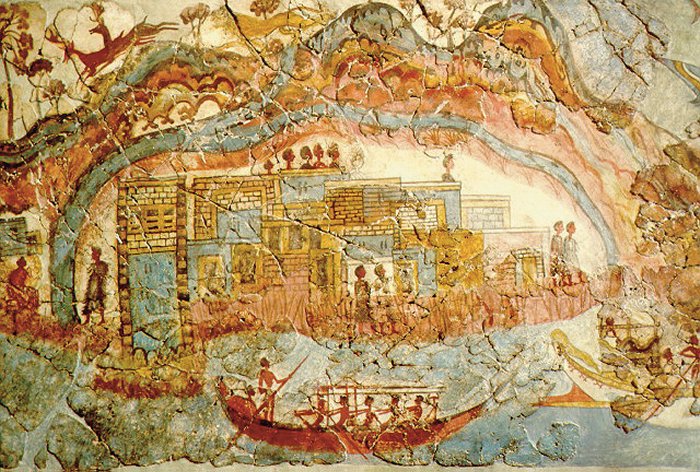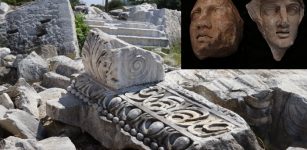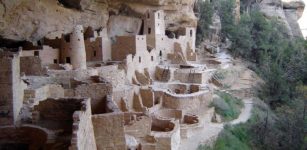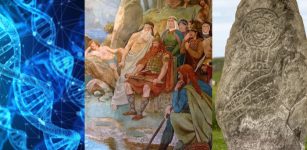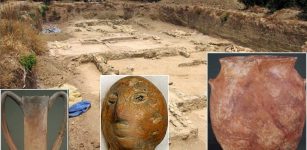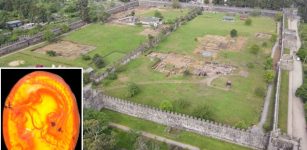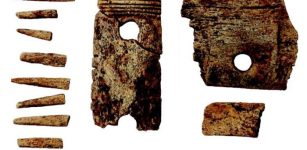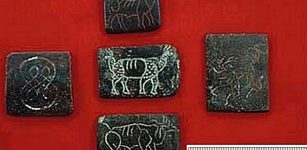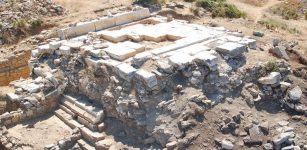Unique Find: Sacred Gate Found At The Minoan Palace Of Archanes In Crete
Jan Bartek - AncientPages.com - The Greek island of Crete is a well-known holiday destination, attracting visitors to the renowned temple of Knossos, which stood until about 1350 BC. However, in the northwestern part of the island near Archanes, lesser-known palace ruins have recently revealed significant archaeological finds.
Depiction of the entrance to the Palace of Archanes, featuring the altars. Credit: Greek Ministry of Culture
Systematic excavations at Archanes began in 1964, leading archaeologists to believe that this palace served as a summer residence for the ancient ruler of Knossos. Greek archaeologist Dr. Efi Sapouna-Sakellarakis has been involved in these excavations since their inception in the 1960s. At 85 years old, she continues her dedicated work and currently leads the team striving to uncover more about this historical site.
This year's excavation at the Minoan palace of Archanes in Crete resulted in a noteworthy discovery. Under Dr. Sapouna-Sakellarakis's leadership, the team unearthed a sacred gate outside the main entrance of the palace—an element found for the first time in a Minoan palace. The archaeologists also discovered four altars and two extensions of a stone platform. These findings highlight the religious significance of this site and support researchers' theories regarding its spiritual function.
The entrance, featuring four altars as depicted on the right side of the photograph, is complemented by two additional altars within the sanctuary courtyard. These include one rectangular altar and another with a stepped design. Credit: Greek Ministry of Culture
In Minoan Crete, the presence of sanctuaries at entrances was a prevalent practice, as evidenced by various findings dedicated to local deities. A notable example is the cult of Eileithyia Prothyraia, a Cretan goddess revered for her role in safeguarding thresholds and embodying the link between sacred spaces and profane grounds.
Additionally, recent excavations revealed a pyramidal base on this platform, complementing an earlier discovery of a double-axe base. Evidence suggests a possible third base, though it is only partially preserved on one western arm of the platform.
This excavation season focused on clarifying specific architectural remains of the complex, and the outcomes have exceeded expectations by providing invaluable insights. In the southern section of the site, a 96-square-meter area was excavated in a courtyard located south of the entrance, featuring notable altars. Although some findings were limited due to fallen stones in the eastern part of the courtyard, archaeologists uncovered ceramic fragments from various periods—including Greek pottery as well as Mycenaean and pre-palatial ceramics.
Entrance door of the western wall. Credit: Greek Ministry of Culture
Beneath this altered layer, especially in the southernmost part of our excavation, the excavation team identified a Mycenaean destruction layer likely caused by fire damage that affected part of a Minoan palace. While Minoan palaces like Archanes continued to be used during the Mycenaean period, this layer predominantly revealed fragments of Mycenaean kylikes along with some damaged Minoan artifacts such as pieces from a stone relief vase and rock crystal fragments. These discoveries are essential for understanding historical transitions and cultural interactions at this significant archaeological site.
Minoan civilization emerged at the end of the third millennium BC on Crete, the largest island in the Aegean Sea, under King Minos—mythically known as Zeus and Europa's son. The Minoans also inhabited several smaller Aegean islands and are recognized as one of the earliest Bronze Age cultures in the Mediterranean region. Their civilization stands out for achievements comparable to those of ancient Egypt, Mesopotamia, and Anatolia.
A detailed illustration of the southern entrance of the palace, featuring two bases designed for double axes. Credit: Greek Ministry of Culture
The reasons behind the decline of the Minoan civilization remain a subject of scholarly debate. Archaeological evidence indicates that palaces and settlements experienced fire and destruction around 1450 B.C., with the notable exception of Knossos, which appears to have been destroyed approximately a century later.
Detail of Minoan painting, from Akrotiri, the Ship Procession. Credit: Public Domain
The emergence of the Mycenaean civilization on the Greek mainland during the mid-2nd millennium B.C., along with their discernible cultural influence on subsequent Minoan art and trade practices, positions them as a probable cause for this decline. Nonetheless, alternative hypotheses suggest natural disasters such as earthquakes or volcanic activity followed by tsunamis could have played significant roles.
See also: More Archaeology News
The eruption of Thera (modern-day Santorini) is considered particularly noteworthy; however, its precise timing remains contentious, thus complicating its association with the end of Minoan society. It is plausible that a combination of environmental degradation and economic competition undermined societal structures, ultimately allowing Mycenaean invaders to capitalize on these vulnerabilities. Regardless of the specific causes, most Minoan sites were deserted by 1200 B.C. and Crete did not reemerge in Mediterranean history until it was colonized by Archaic Greeks in the 8th century B.C.
Written by Jan Bartek - AncientPages.com Staff Writer
Expand for references




